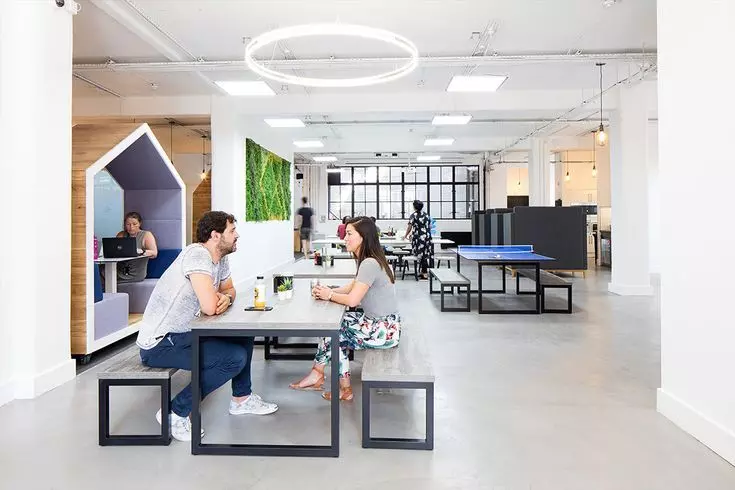How Co-Working Spaces Are Redefining Flexibility and Innovation

How Co-Working Spaces Are Redefining Flexibility and Innovation
Co-working spaces have transformed into vibrant innovation hubs, going beyond shared offices to cultivate productivity, collaboration, and holistic well-being.
The modern workforce is undergoing a transformative shift, with businesses and professionals seeking greater flexibility, collaboration, and efficiency in their work environments. Co-working spaces have emerged as a dynamic solution, evolving beyond just shared office spaces to become innovation hubs that foster productivity, networking, and well-being. In a discussion with The Hans India, Sreenivas Tirdhala, Co-Founder & Chief Strategy Officer at iSprout shares how co-working spaces are adapting to contemporary demands
In what ways is the co-working space evolving to meet modern work needs?
Co-working spaces are increasingly designed to meet the fluid demands of the contemporary workforce. In addition to flexible membership plans, high-speed connectivity, smart office technology, wellness zones, and eco-friendly designs, other features include community-centric approaches, providing networking events, skill-sharing sessions, and professional development opportunities. Most spaces focus on creating an environment that balances comfort with productivity, providing a space where business of all sizes can thrive.
What impact do theme-based office interiors have on employee productivity and well-being?
An important aspect of enhancing employee morale and productivity is theme-based office interiors. A space designed on a theme could spur creativity, foster focus, and reduce stress. An example would be nature-themed, which is usually marked by greenery and more natural light, thus offering an environment that calms a person. Story-based themes, such as a Mahabharata-inspired office, could increase a feeling of belonging and cultural relevance. Such environments also allow for collaboration and create experiences; therefore, they lead to retention and satisfaction.
What inspired the development of innovative co-working solutions like iSprout?
The inspiration behind iSprout arose from the growing necessity of agile and scalable solutions to workspace for businesses of various sizes. With rapid technological breakthroughs and a shift in preferences of the workforce, the traditional office setup became increasingly less appealing. iSprout came into existence to bridge that gap by providing not only the workspace but also integrated communities that support business growth. Focus on providing premium, fully serviced environments in which companies can concentrate on core objectives, freeing themselves from operational hassles.
What are the future growth aspirations and expansion strategies for flexible workspaces?
The future of flexible workspaces is personalization and strategic expansion. Growth aspirations are to penetrate Tier 2 and Tier 3 cities to tap into untapped markets and foster partnerships with global corporations. Strategies are around integrating advanced technology such as AI-driven analytics for workspace optimization, promoting hybrid work models, and focusing on sustainability. Diversifying offerings, such as niche-specific workspaces for creative industries or tech startups, is also on the horizon.
How is the trend towards flexible work environments and short-term rentals reshaping the real estate landscape?
Rising short-term rentals and flexible workspaces have destroyed the old traditional model of real estate. More and more companies prefer flexible and scalable leased spaces to decrease capital expenditure and long-term liabilities. Due to this new trend, demand for multifunctional property and coworking is on a rise. And today, landlords are going with operators who can offer a managed solution, which improves space usage and maximizes value. This shift is redefining the real estate market, making it more agile and customer centric.


















